- THE NURTURER: JACKSON AW
- THE BELIEVER: JAKE LEE
- THE PROVOCATEUR: JEFFREY KOH
- THE HERO MONGER: BRYAN TAN AND BEN ANG
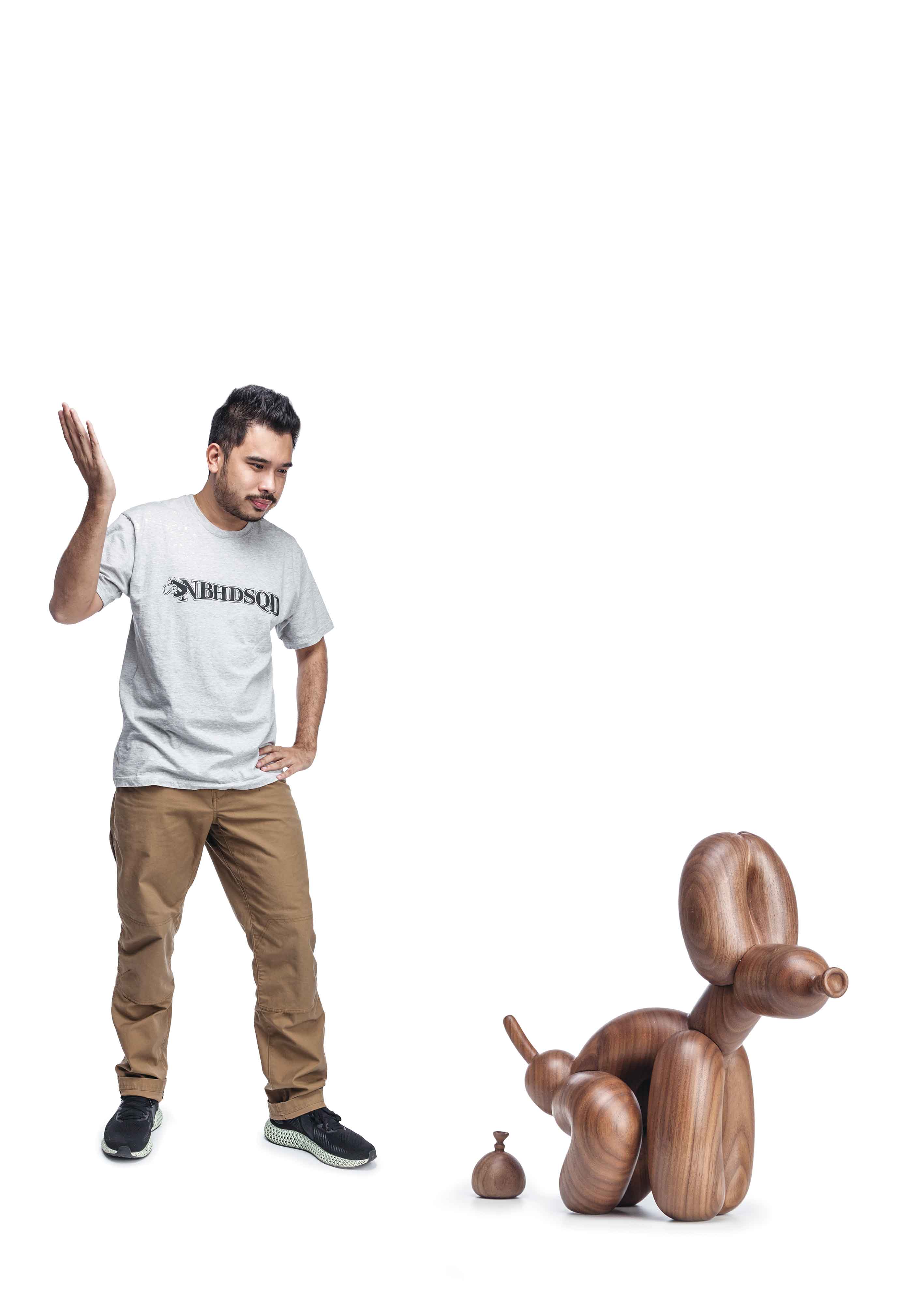 Mr. Jackson Aw with Woodworked Popek designed by Whatshisname
Mr. Jackson Aw with Woodworked Popek designed by Whatshisname
People and their skills drive the process of making art toys, and the effort that goes into it is worthy of respect, declares Mr. Jackson Aw, founder of Mighty Jaxx. The process comprises different stages, each one as important as the next. At every stage, workers are lined up to perform a particular task such as printing, painting, and assembling parts.
Mr. Aw began collecting art toys back at the polytechnic. “After I graduated, I started a business selling refurbished vintage cameras (photography is my other passion). I had a good run with the photography venture but decided to sell it off to a business partner in 2012 to start something new and related to my passion for collecting. I loved the idea of creating collectibles – and not just buying them,” he shares.
Adopting the mind-set of collectors makes the Mighty Jaxx team understand the most important aspects of production: consistency and quality. “We mostly produce limited edition collectibles, and have to ensure that our collectors are getting their collectibles as promised.”
Most of Mighty Jaxx’s output are designed around pop culture in ways that collectors can identify and connect with on an emotional level. Mighty Jaxx also consults their followers regularly to find out what they like.
Mighty Jaxx owns the copyright to its original creations, but they also get into licensing or collaborative agreements with other IP owners. “We do not think one had an advantage over the other. Collaboration is a huge part of our DNA, and we always try to come up with a new designs either through collaboration or original creations. Working with both licensed and original creations gives us even more creative freedom to produce sought-after pieces.”
Mighty Jaxx usually produces art toys in limited quantities to maintain exclusivity and originality. Aesthetics play a very big role what Mighty Jaxx ends up producing.
“We only produce collectibles that we would be proud to own. We are firm in our belief that our people have to be passionate and open-minded about what they do. If they are able to incorporate those into their work, their creations will always have a place to call home.”
Mr. Aw studied interaction media design, which focuses on designing interactive products. This training informs his foray into designing collectibles.
Mighty Jaxx manufactures in different factories around Asia – depending on the type of work they need to produce. “We do not work with just one specific manufacturer in order to retain flexibility and control over the creative process. We also do not have a specific or fixed number of units or pieces for each release, but we do our research to make sure it is something that people want before committing to a new release.”
If one can do everything by himself, he can probably start the business with S$5,000, Mr. Aw speculates. He launched Mighty Jaxx with an initial capital of S$20,000, which is considered a sizeable today. “Based on what I know, manufacturing today is an entirely different game. There are established factories who excel in it, so it is wiser to work with them.”
- THE NURTURER: JACKSON AW
- THE BELIEVER: JAKE LEE
- THE PROVOCATEUR: JEFFREY KOH
- THE HERO MONGER: BRYAN TAN AND BEN ANG
The Believer: Jake Lee
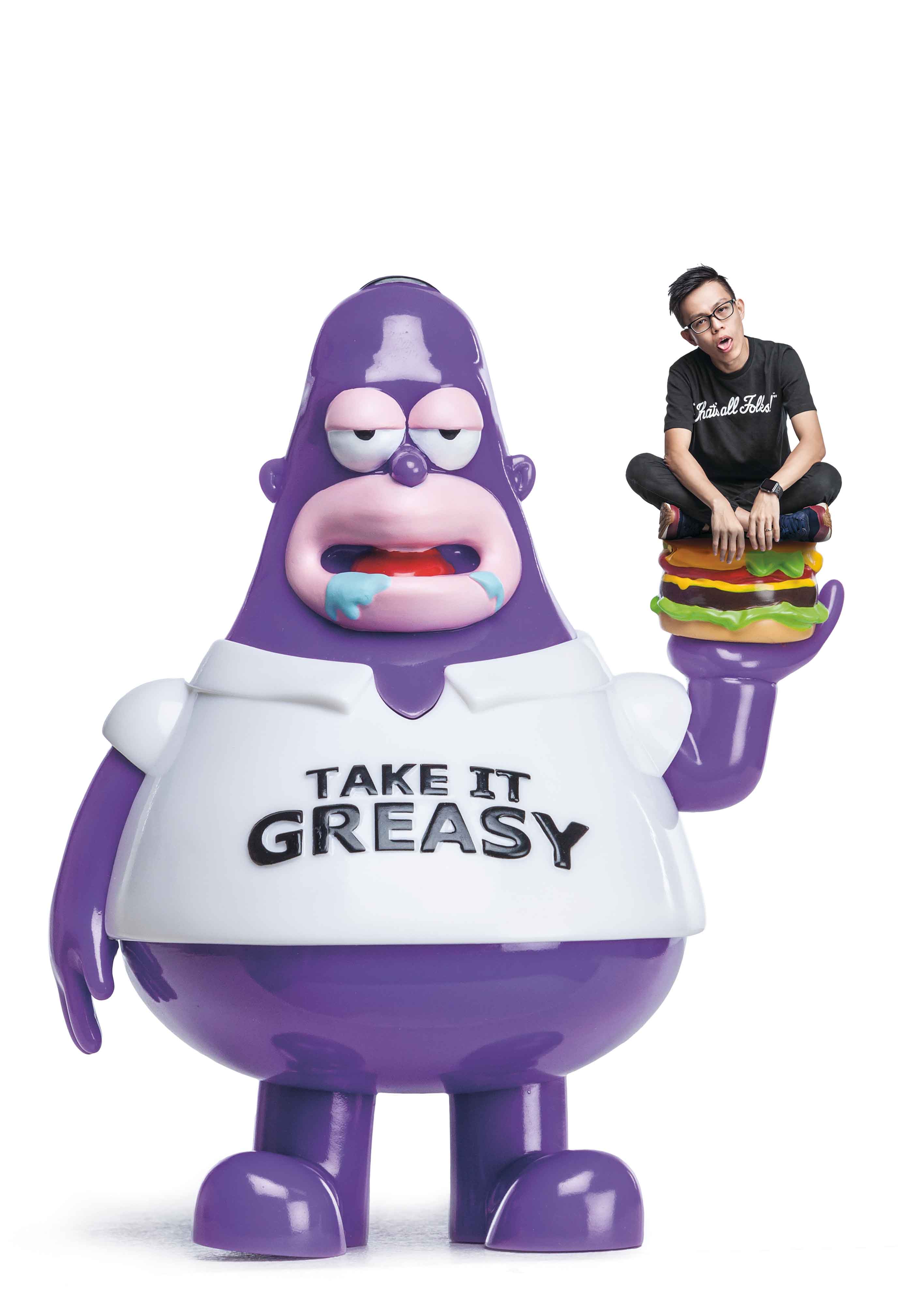 Mr. Jake Lee with McGreasy by Aaron Craig
Mr. Jake Lee with McGreasy by Aaron Craig
“The process of making a toy can be long and frustrating, and I have to be involved in every step of the way.” Mild-mannered and deliberate, Mr. Jake Lee’s admission seems too candid and therefore out of character.
But as he continues to describe how art toys are made, I begin to understand where he is coming from. Making them is a long-drawn, meticulous process with no room for either shortcuts or mistakes.
“For me, it all starts either with an idea that has been eating at me or something that I came across online – perhaps an illustration that I think would make a great toy. From there we work on a style guide and decide how we are going to create it and in what material. Once the mold is created out of the 3D model, there can be no more major changes, so it is important to get everything sorted out and communicated clearly right from the start.”
I look around Pobber Toy’s small and very tidy office located in a co-working facility. The furnishing is spartan, a lone work desk, a few chairs, and a steel shelf in one corner.
The office may be Pobber Toys’ nerve center but manufacturing, quality control and fulfilment are mostly done out of China. The team members complete a project remotely with virtual meetings and long distance exchanges until everything clicks into place.
Mr. Lee draws ideas for toys from anything, even from what others are doing, and his range runs from cute to rude. “It can be a wholly original design or based on existing characters to which we add our own spin.”
Pobber Toys works with freelance artists who grant them rights to the design for a period of time as stipulated in a formal agreement. “Owning the copyright to a design allows us the creative freedom to do what we want,” he explains. “Otherwise anyone with means can come in and do the same thing, and we will all end up with products that look the same.”
Collecting has been Mr. Lee’s longstanding pursuit. He has gone through stamps, Coca-Cola memorabilia, and original movie posters; art toys is some form of a natural progression.
In school, although he was not good at art, he showed an aptitude for business. The BBQ catering company that he started with some friends while at the university is still operating. “I am no longer involved in it, but it was an experience that taught me a lot.”
At the height of the financial crisis in 2009, Mr. Lee decided to quit his job in the banking sector to start his own business.
“Looking back, I think I was crazy to do such a thing.” A year later, he launched Pobber Toys and has not stopped since to release limited edition art toys.
The business presented him with many challenges. “I’ve been through a lot of learning by doing, sprinkled with some costly mistakes such as having the molds retooled, and spending many nights at the factory. But magic happens from working with people who help me bring to life an idea that I have. They are the ones who teach me what I need to learn to create something out of a design idea.”
Pobber’s production run for a single edition varies between 30 to 500 pieces depending on the design. “Sometimes, we produce based on pre-orders, that is, we produce according to the number of orders we receive.”
Profitability is key to survival, Mr. Lee admits, but it is not the only reason for Pobber Toys’ existence. “A US Air Force personnel who was stationed in Afghanistan contacted me once to buy some toys for the children in orphanages. That was an inspiring and gratifying moment for us. We all have bills to pay and mouths to feed but we can still focus on doing good work and making toys that people want and love.”
- THE NURTURER: JACKSON AW
- THE BELIEVER: JAKE LEE
- THE PROVOCATEUR: JEFFREY KOH
- THE HERO MONGER: BRYAN TAN AND BEN ANG
The Provocateur: Jeffrey Koh
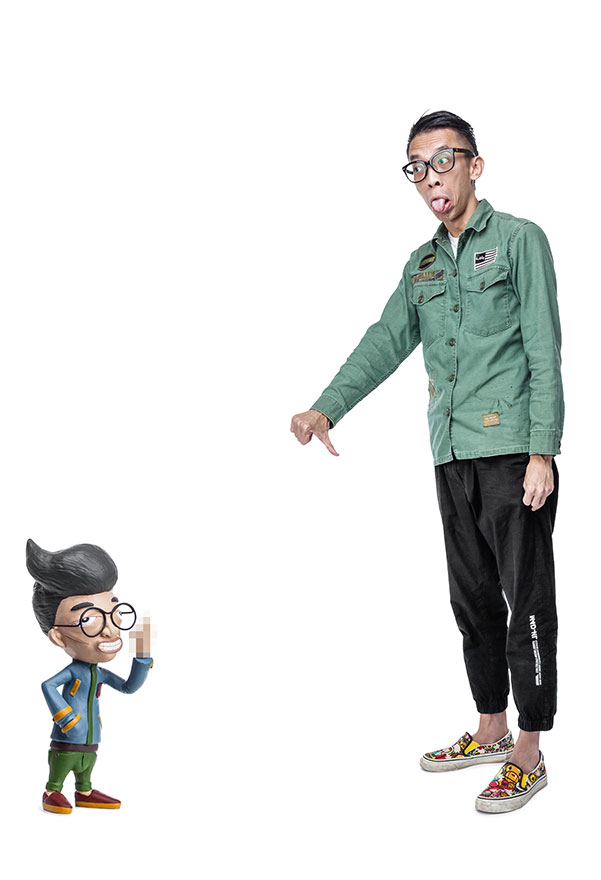 Mr. Jeffrey Koh with LeFucker by t.w.chang
Mr. Jeffrey Koh with LeFucker by t.w.chang
“Inspiration usually comes to me when I’m alone,” Mr. Jeffrey Koh reveals. “Whether I’m watching a movie, taking a shower or sitting in the can, it doesn’t end; I’m always thinking how to do (art toys) better.”
We are surrounded by toys in showcases in the outer room of Flabslab. I wince as I spy a statue of the reclining Buddha – but with Ultraman’s head – and recall that Mr. Koh has ruffled some big corporate feathers in the past with his release of a piece in Ronald McDonald’s likeness but in the pose of Rio de Janeiro’s Christ the Redeemer. The Buddha, meanwhile, a part of the Gaia series that Indonesian artist Budi Nugroho designed for Flabslab, managed to offend some devout Buddhists.
I’m aware that Mr. Koh is a provocateur, but I have little idea how far he would go or what his true motives are. Is he a troublemaker pushing his luck or a philosopher challenging the common perspective? He claims to be neither but makes a point of his preference for things with an unusual, often dark underside. “Unexpected elements make things more interesting because they offer surprises.”
Mr. Koh confesses that he’s an avid collector, and that toys are just the latest iteration of his passion. But it does not prepare me for the towering piles of toys in the inner office where new and vintage pieces, limited edition releases and one-offs, prototypes and rare memorabilia threaten to devour the workspaces.
“At the end of the day, I only make sh*t that I would buy myself,” he continues as he leads me to his own office from where he runs the creative agency Nerf Creative and its spawn, Flabslab. Every inch of his office is similarly covered with even rarer pieces: characters imagined on the spot and drawn on blanks by visiting artists, figurines of famous people in unlikely, often rude poses, and actual props from blockbuster Hollywood movies.
When I ask Mr. Koh about his background, he smilingly told me that he was trained in the dark arts of ripping off ideas from other people. This is not entirely true.
He is an established art director who founded and grew Nerf before setting up Flabslab in 2011 as an antidote to the growing boredom he felt running the agency. The name was derived from ‘Fly like a butterfly, sting like a bee’, a light-hearted phrase that show up in their work: The butterfly is the colourful, playful strokes and the bee is the concealed, sharp bite.
Flabslab started making its own art toys about eight or nine years ago when most of the more interesting output was coming from the other side of the world, Mr. Koh remembers. “We wondered why we couldn’t turn things around and make people look for things coming from this hemisphere.”
If there were lessons that Mr. Koh has derived from running an art toy studio, they are: “Google is everything. Be nice to the people who are of no use to you and stay respectful to those who are better than you. Making toys, like many things is life is not rocket science. Make mistakes and learn every day.
Surprisingly, after several successful launches, Mr. Koh is uncertain about his feeling towards making art toys. “It is still neither a career nor a calling for me.”
- THE NURTURER: JACKSON AW
- THE BELIEVER: JAKE LEE
- THE PROVOCATEUR: JEFFREY KOH
- THE HERO MONGER: BRYAN TAN AND BEN ANG
The Hero Monger: Bryan Tan and Ben Ang
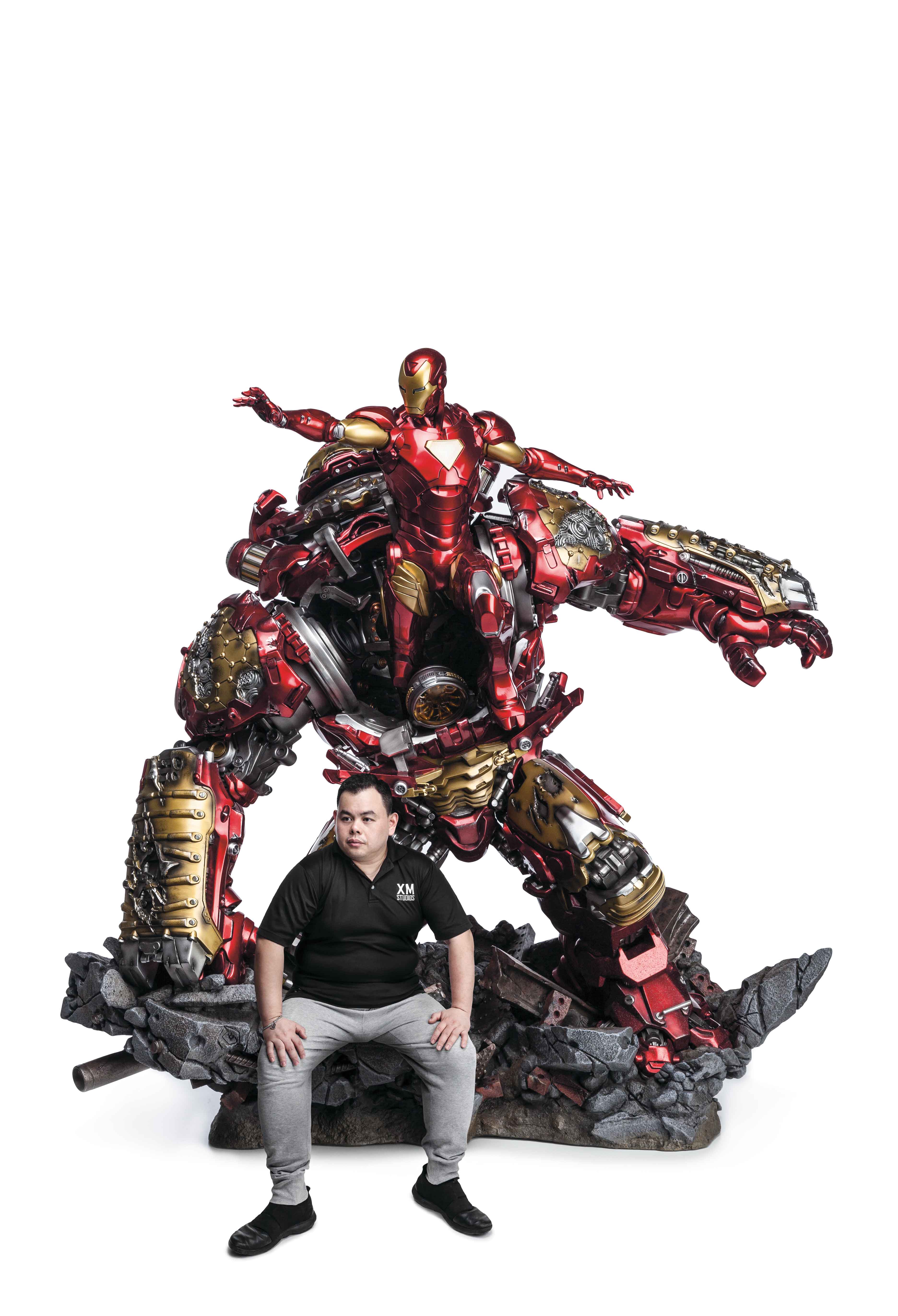 Mr. Ben Ang
Mr. Ben Ang
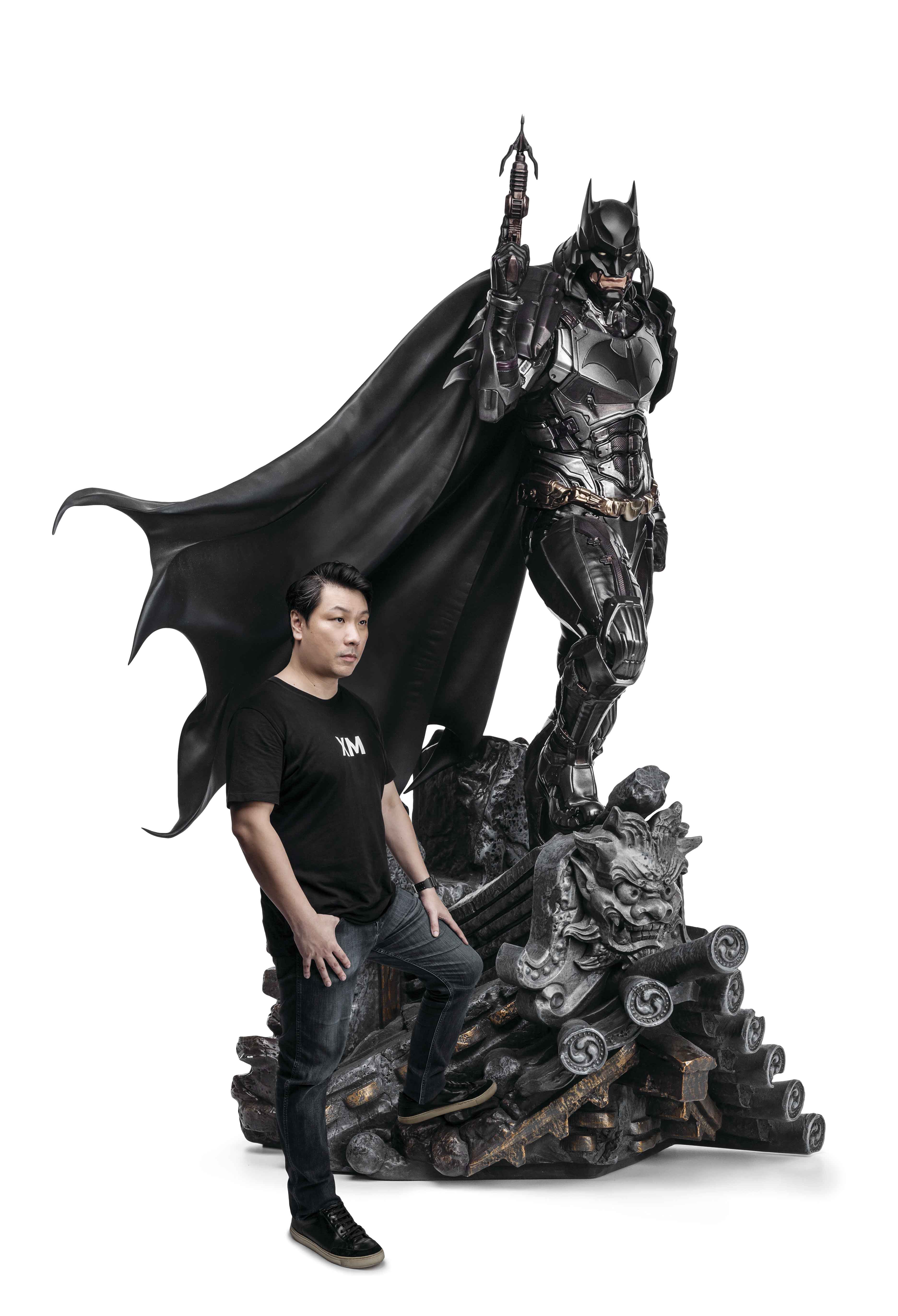 Mr. Bryan Tan
Mr. Bryan Tan
XM Studios produces luxury quality collectibles based on pop culture characters from the most successful IPs of Marvel (Cinematic Universe) and DC (Comics), as well as Transformers and Star Wars films. “These are all officially licensed by the IP owners; we work closely with their approval teams to ensure we are on brand,” says Bryan Tan, co-founder and business director, “but we plan to create our own original IPs in the near future.” Although copyright ownership boosts creativity, design and output, he acknowledges that working with established licensed characters help sustain demand.
The licensors approve the outcome at each stage to ensure that the figurines meet the standard. “Over the last four years, we have developed our own internal quality assurance and creative processes,” Mr. Tan says. The most important steps of these process are the selection of a concept that will work well as a figurine, the engineering that will ensure the piece can be produced with little issues, and the quality assurance process that will allow only the top quality products are shipped to customers.
“We are involved in every aspect of the process. We may even commission external manpower for sculpting or reworking and enhancing the final file before prototyping. We also create our own prototypes as an integral part of engineering. This allows us to anticipate manufacturing problems ahead of production.”
Business takes a backseat at XM Studios. “We are collectors at heart and we started this business with a desire to make the best collectibles that we can dream of. That’s what drives us,” Mr. Tan says.
XM Studios was started by a small group of like-minded hands-on garage kit painters, toymakers and passionate collectors who shared a common passion for comics, video games and toys. Setting up the business was natural. Although none of them received any art school training, they applied their self-taught skills honed over years working with their hands.
Mr. Tan foresees sustained stability moving forward. He is buoyed by the fact that the design and arts scene in Singapore is picking up. “We believe there is a wealth of hidden talents of designers here. As for manufacturing, China will remain as one of the most effective locations.”
New entrants will have to invest in acquiring licenses and developing manpower, before a company can even start to produce collectibles; the first can be quite costly. Nevertheless, a studio can concentrate on concept and design and partner with a manufacturer for production, which is the current norm in the industry, Mr. Tan explains.
Singapore-made art toys are often manufactured in specialized facilities in China, although conceptualization and prototyping are completed locally. In the case of XM Studios, these collectibles are released in strict limited edition of 999 pieces per design.
Some designs are produced in even lower quantities of 200 pieces. “To put it in perspective, only a handful of collectors all over the world can own our products,” Mr. Tan explains.







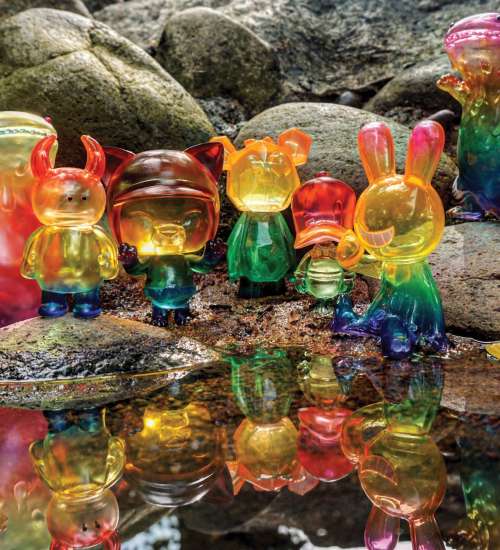


 Back
Back
